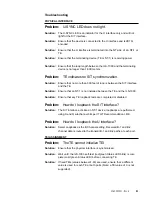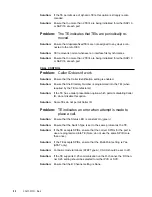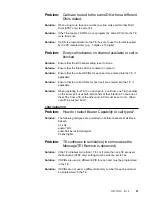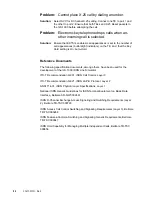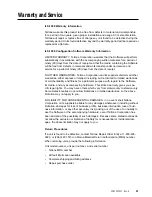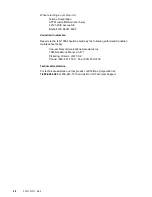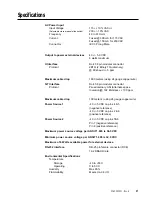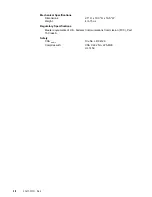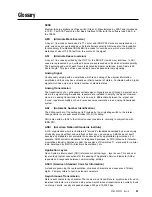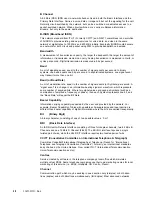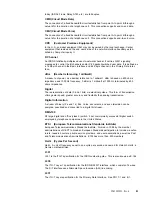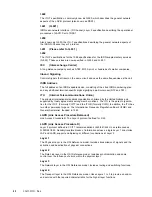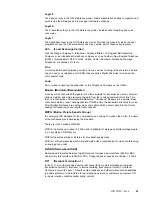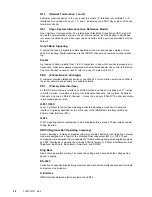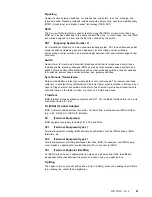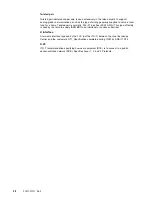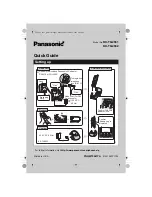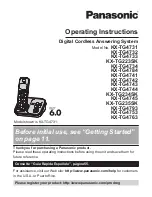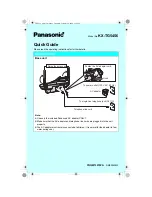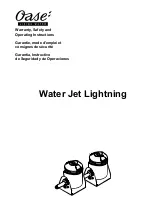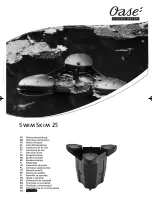
40-400-00001, Rev. A
45
Signaling
Communication between switches, or switches and end points, to set-up, manage, and
tear-down calls. Signaling methods include dial pulse (rotary dial), dual-tone multifrequency
(DTMF) (touchtone), and digital “packet” technology (ISDN, SS7).
SPID
The Service Profile Identifier is used to identify a specific ISDN set when more than one
ISDN set has been attached to the same central office line. In most cases, only one ISDN
set will be assigned to a line, and the SPID is not used by the switch.
SS7
(Signaling System Number 7)
An international, standard, common channel signaling system. SS7 is used between public
network switches (replacing per-trunk signaling), local exchange carrier switches,
interexchange carrier switches, and (increasingly) between local and interexchange carrier
networks.
Switch
Generic term for machines that switch telephone calls from/to telephones and/or trunks.
Includes private branch exchanges (PBX) as well as other premises based systems, and
public network central office machines such as local exchange switches, tandem switches,
toll switches, interexchange carrier switches, and gateway switches.
Synchronous Transmission
Data communication protocol set where data is sent continuously. The receiver and trans-
mitter are in constant bit synchronization. Character (byte) synchronization is achieved by a
Layer 2 Flag character transmitted at the start of each block. Synchronous transmission is
normally found on the faster circuits, e.g. rates of 4.8 Kb/s and above.
T Interface
ISDN Interface between station equipment and NT1. For the Basic Interface this is a 4 wire
connection limited to 1 KM.
TA (ISDN) (Terminal Adapter)
ISDN Customer-owned protocol converter. Converts from a standard non-ISDN interface
(e.g. X.25, RS-232) to ISDN S/T interface.
TE
(Terminal Equipment)
ISDN equipment category including TE1s, TAs and TE2s.
TE1
(Terminal Equipment type 1)
Terminal Equipment meeting ISDN interface specifications such as ISDN phones, ISDN
terminals, etc.
TE2
(Terminal Equipment type 2)
Terminal Equipment providing interfaces other than ISDN, for example, non-ISDN equip-
ment. Needs an appropriate terminal adapter (TA) to connect to ISDN>
TEI
(Terminal Endpoint Identifier)
An ISDN device’s Layer 2 address that is unique on a passive bus. Used to establish
independent data inks between the switch and each device on a passive bus.
Tip/Ring
The negative (tip, or ground) and positive (ring, or battery) wires of an analog lines. Refers
to an analog line, rather than a digital line.

